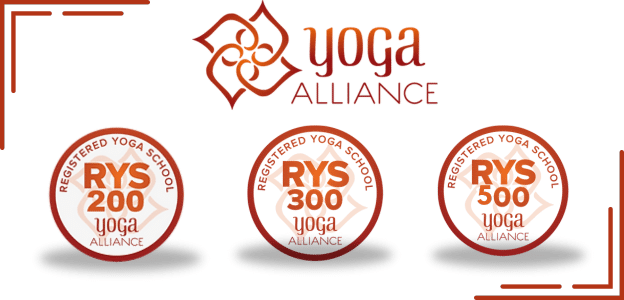300 Hour Yoga TTC in Rishikesh
On A Spiritual Journey We All Have The Same Destination
Beginner's Course For Yoga Lovers
300 Hour Yoga Teacher Training in Rishikesh

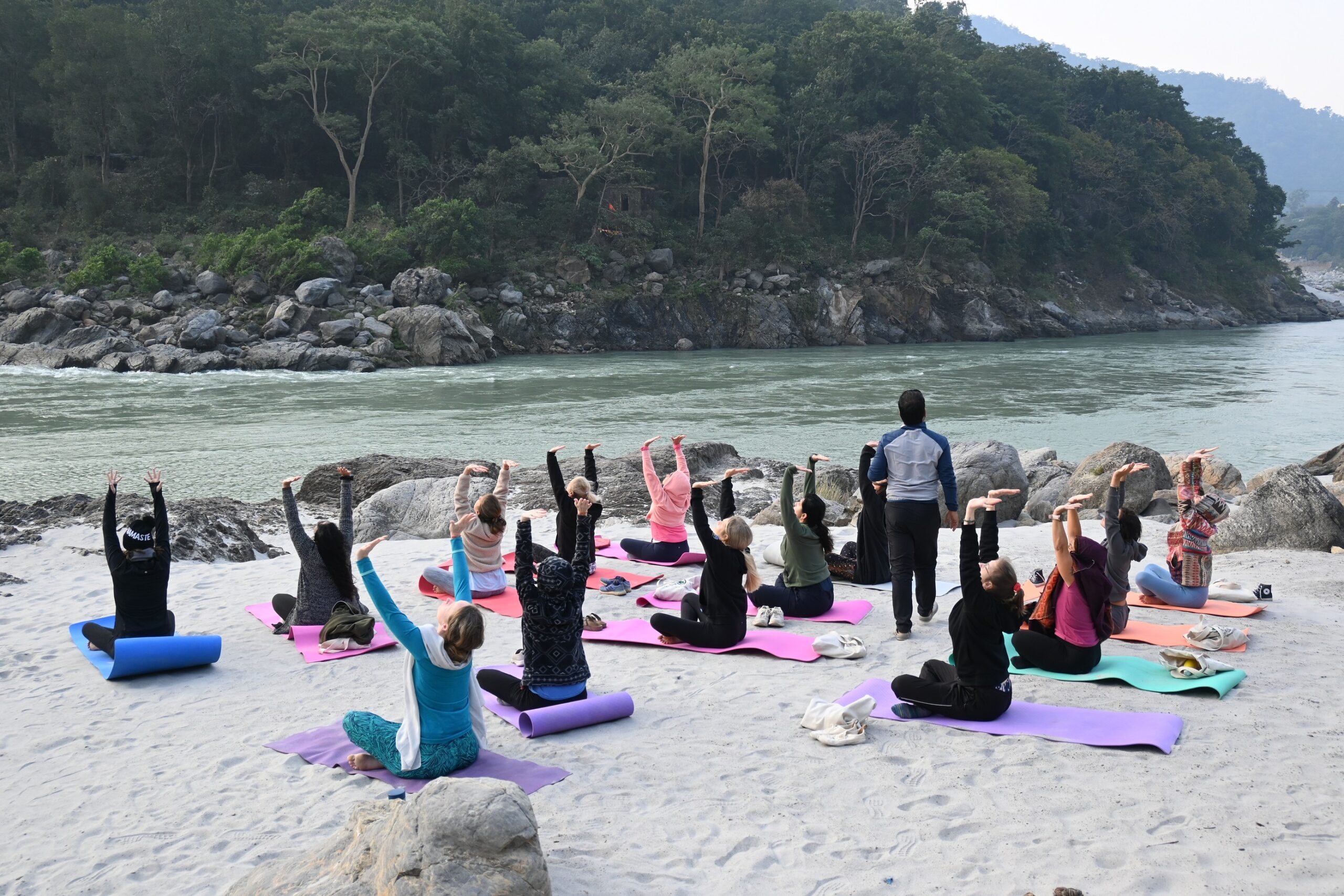
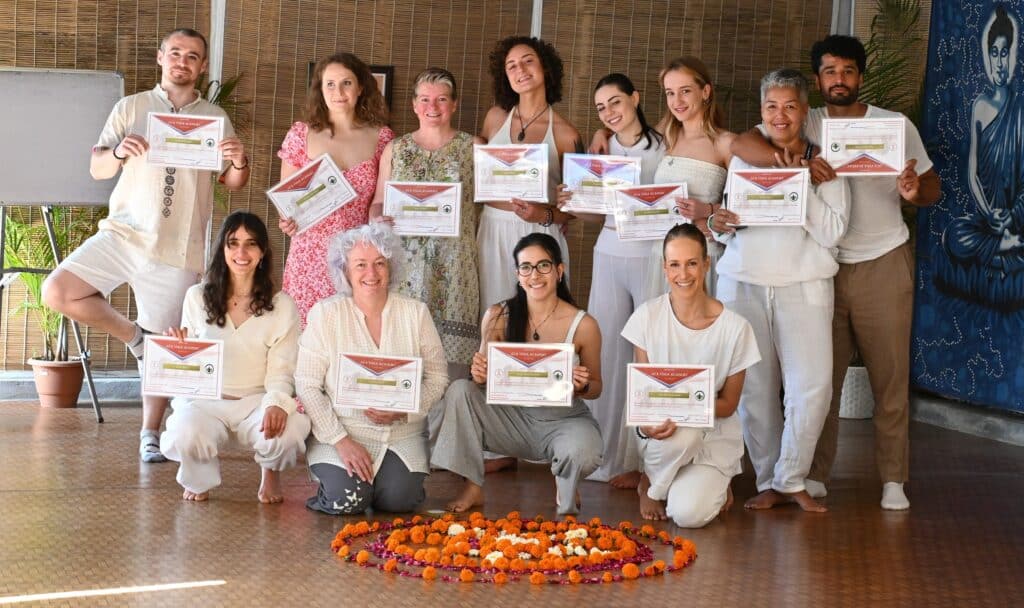
Our 300 hour Yoga Teacher Training in Rishikesh is meant for those students who have successfully completed 200 hour Yoga Teacher Training in Rishikesh.
If you’re looking to enhance your yoga skills, Jiva Yoga is the perfect place for you. We have designed wonderful course that is 300 hour yoga ttc in Rishikesh , In this course we will guide you from the foundational stages to the advanced levels of ancient Yoga practices.
For those who have completed a 200-hour Yoga Teacher Training, Can enroll for this course. Which offers a unique opportunity to deepen your practice and explore a broader range of yogic teachings.
The course is conducted in English, so a certain level of proficiency in the language is required to understand and engage with the instructions and lectures. However, there are no specific educational prerequisites to join. As long as you bring an open mind and a kind attitude, you are warmly welcome.
Please note, applicants must be between 18 and 60 years of age at the time of admission.” The 300 hour yoga teacher training in Rishikesh offers an immersive experience, blending ancient wisdom with modern practices. It’s the perfect opportunity to deepen your practice and become a certified teacher in the heart of yoga’s birthplace.
Points To Be Noted
What to expect during a 300 Hour Yoga Teacher Training in Rishikesh?

- If you have booked a course with us but due to some reasons you are not able to join it then we offer you the possibility to join the next available course within the one year calendar.
- We providing the ultimate blend of yoga styles with practical healing techniques from Ayurveda.
- The 300 hour yoga teacher training in Rishikesh follows high-quality standards by including subjects such as Ayurveda, Asana, Pranayama, Mantra chanting, Meditation, Anatomy & Physiology, Yoga Philosophy/Ethics/Lifestyle and other time-honored yoga techniques. View the full schedule for more details on daily activities.
- This course will enable you to develop your own unique teaching style that will set you apart from the rest.
- Our teachers are highly skilled in adapting their lessons to suit your ability – so if you are just starting on your yoga path, or you are already an advanced practitioner looking to expand your knowledge, this course is for you. You can meet our teachers and have a taste of how they work by booking a private online class with them.
- Three daily freshly made vegetarian meals (breakfast, lunch, dinner) and chai/tea/Coffee are included in the price. The food is fully prepared hygienically with fresh vegetables and can be modified to suit a vegan diet.
- Jiva Yoga offers comfortable accommodation, the rooms are equipped with basic and useful items. Each room has it’s private attached bathroom with running hot shower, air conditioner, western type of toilet and other necessities that make the stay comfortable. The facility comprises all the modern amenities so we are sure you would enjoy your stay with us
- The 300 hour yoga teacher training in Rishikesh is a transformative journey for serious yoga practitioners looking to expand their knowledge and teaching skills. Set against the serene backdrop of the Himalayas, it's a chance to deepen both your practice and understanding of yoga.
Alignment, kriyas, and teaching methodology
Practical aspects of 300 Hour Yoga TTC in Rishikesh

Alignment & Adjustment
Master the alignment of Yoga Asanas and learn how to help your students get deeper into a posture, how can you be more flexible through adjustment. You will learn benefits, precautions, methodology and correction of asanas in this class.
Mudra(Gesture)
The practice of mudra is an ancient facet of yoga. Performing gestures effects the energy flow of the body and can change a person’s spiritual and mental characteristics like Jnana mudra, Chin mudra, Yoni mudra, Bhairava mudra, Shambhavi mudra
Bandha(Lock)
A bandha is a kriyā in Hatha Yoga, being a kind of internal mudra described as a “body lock,” to lock the vital energy into the body. Bandha literally means bond, fetter, or “catching hold of”. Maha Bandha (“the great lock”) combines all the other three bandhas, namely
Teaching Methodologies
Principles of demonstration, observing, assisting and correcting, instruction, teaching styles, qualities of a teacher, voice projection, floor presence. The student’s process of learning, planning and structuring a class, alignment and hands-on-adjustments, dealing with injuries and safety precautions. The 300 hour yoga teacher training in Rishikesh is an immersive experience that combines rigorous practice with deep spiritual insights.
Class Sequencing and Practical Assessment
Learn appropriate and effective sequences of classes, marks of a good teacher, demonstration, individual care of each student, proper alignment and conducting a class of your own in a friendly and safe environment.
Ayurveda lessons
Learn authentic and practical Ayurvedic concepts from a respected and experienced doctor of Ayurveda. Gain skills that can change your own life as well as be used to guide your students on their own healing journey through yoga.
Time Table At Jiva Yoga Academy
Daily Schedule - 300 Hour Yoga TTC in Rishikesh

We’ve totally reinvented the traditional teacher training experience and removed the obstacles that most modern students struggle with when studying yoga. Our daily schedule is compassionate & relaxed and allows you to process all that may come up during your training. Our 28-days course has 4 full days off and leaves plenty of time to play, have fun in Rishikesh. 300 hour yoga ttc in Rishikesh offers a profound opportunity to advance your practice and teaching skills in one of yoga’s holiest cities. Surrounded by nature and ancient teachings, it’s a transformative experience for those committed to deepening their yoga journey.
07:00 - 08:00
Pranayama, Yogic Cleansing, Mudra, Bandha
08:15 - 09:45
Ashtanga Yoga
09:45 - 10:30
Breakfast
11:00 - 12:00
Philosophy
12:15 - 13:15
Alignment
13:15 - 14:15
Lunch
15:15 - 16:15
Anatomy
16:15 - 16:45
Tea/Cofee/Chai
17:00 – 18:30
Hatha Yoga
18:45 – 19:45
Meditation
19:45 – 20:45
Dinner
22:00
Light Off
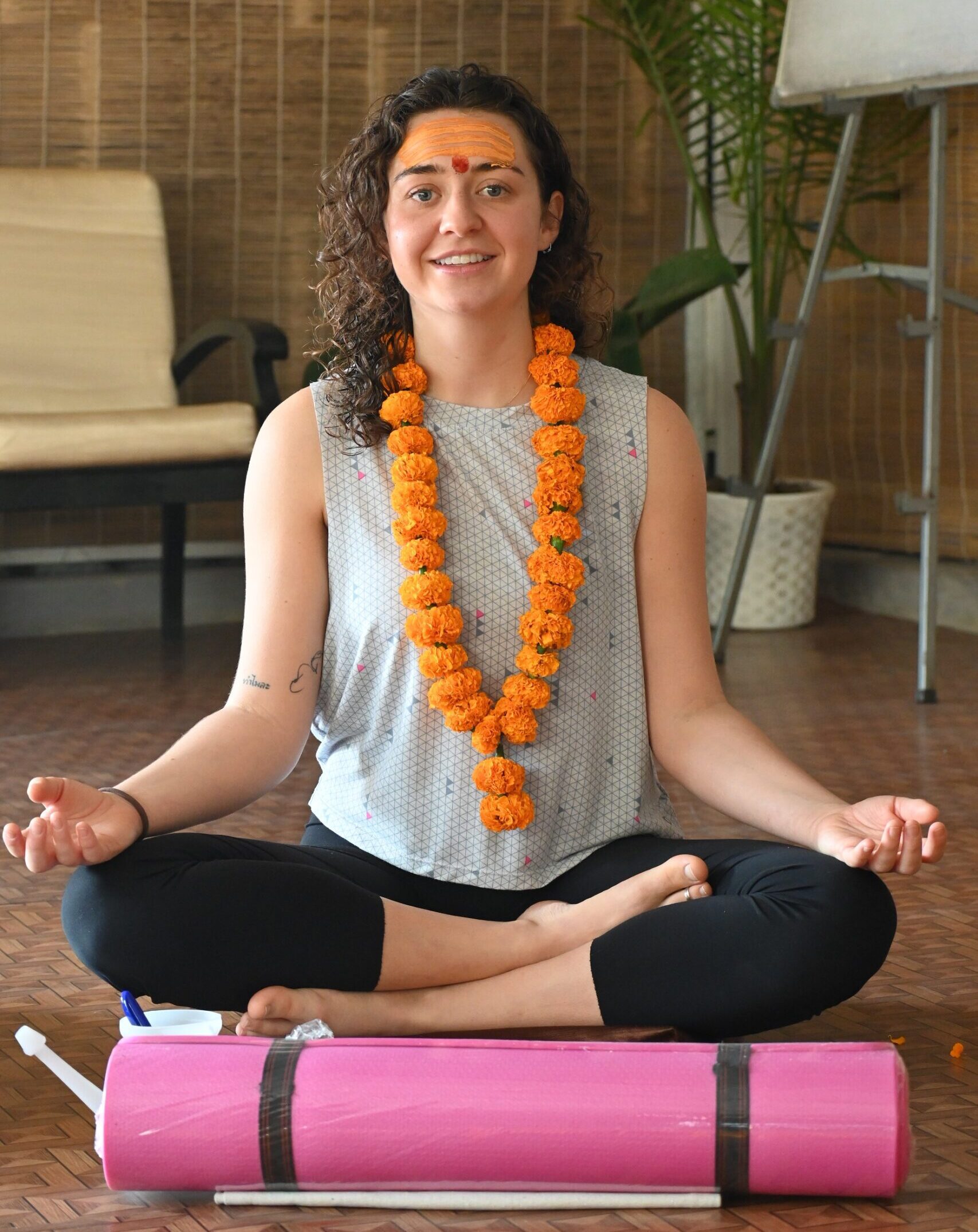
Jiva Yoga Academy
300 Hour Yoga Teacher Training in Rishikesh Outline

- YOGA POSTURES (ASANA)
- PRANAYAMA (ANCIENT BREATHING TECHNIQUE)
- RECITATION OF SACRED SOUND (MANTRA CHANTING)
- MUDRAS (GESTURES)
- MEDITATION (DHYANA)
- TEACHING METHODOLOGY
- TEACHING PRACTICE (ADHYAPANAM)
- ANATOMY AND PHYSIOLOGY (SHARIR VIJNAN)
- PHILOSOPHY (YOGA DARSHANA)
- YOGA NIDRA (PSYCHIC SLEEP)
YOGA POSTURES (ASANA)
In 300 hour yoga teacher training in rishikesh students will gain extensive knowledge on yoga postures and will increase their physical strength, inner strength and naturally their flexibility. Some asanas are connected to certain mind patterns and throughout the training this body/mind connection will get more clear in many ways. There will be assistance with the asanas and space for alignment. In 300 hour yoga ttc in Rishikesh the focus is on Hatha Yoga and Ashtanga Yoga.
PRANAYAMA (ANCIENT BREATHING TECHNIQUE)
Pranayama is an ancient yogic breathing technique that is used as preparation for meditation and is a vital aspect of practising yoga. It improves the respiratory system and purifies the body and mind. Pranayama topics include an introduction, aspects of pranayama, different types of prana and types of yogic breathing. Nadi Shodhana (alternate nostril breathing) Ujjayi (the psychic or victorious breath) Shitkari (hissing breath) Sheetali (cooling breath) Kapalabhati (frontal brain cleansing breath) Bhramari (humming bee breath) Bhastrika (bellows breath) Suryabheda (vitality stimulating breath) including advance variations.
RECITATION OF SACRED SOUND (MANTRA CHANTING)
The purpose of mantra chanting in yoga is to generate vibrations and connect with the universe. Each mantra has it’s unique vibration. Pratah Smarana (morning prayer) Ratri Smarana (evening prayer) Swadhyaya Prarthana (study prayer) Maha-mrtyunjaya mantra and gayatri mantra AUM chantings Shiva chantings Ganesha chanting Mantras for Chakras
MUDRAS (GESTURES)
The practice of mudra is an ancient facet of yoga. Performing gestures effects the energy flow of the body and can change a person’s spiritual and mental characteristics. Jnana mudra Chin mudra Yoni mudra Bhairava mudra Shambhavi mudra Khechari mudra Khechari mudra Asvini mudra Bhairavi mudra Dhyan mudra Apaan mudra Samaan mudra Vayu mudra.
MEDITATION (DHYANA)
Meditation is a systematic practice that promotes physical, mental, and emotional tranquillity. It increases the vital energy in the body and gives you more aliveness, good blood circulation and a relaxed nervous system. Breathing awareness meditation AUM (Om) or mantra meditation Trataka Tips for developing concentration Silence practice Cathartic meditation Kundalini meditation Chakra meditation Sufi Meditation Dance meditation.
TEACHING METHODOLOGY
A yoga teacher should efficiently perform the practical applications of class planning and preparation. At 300 hour yoga ttc in Rishikesh, students will learn how to create a positive and peaceful class environment for an enjoyable and transformative experience. You will learn: How to plan and structure a yoga asana class Principles of demonstration Qualities of a teacher and teaching styles How to use the breath and voice while teaching Observing, assisting and correcting Verbal cues Functional modifications, injuries and safety precautions Guidelines for each asana (as per manual) Assisting inversions.
TEACHING PRACTICE (ADHYAPANAM)
Students will take turns practicing their teaching skills by performing in front of their peers and teachers. There will be demonstration, alignment, and instructions. You will learn: Symptoms of a good teacher Clear instruction Demonstration Proper alignment Individual care of each student. [300 hour yoga ttc in Rishikesh]
ANATOMY AND PHYSIOLOGY (SHARIR VIJNAN)
Proper understanding of the physical body will help to prevent injury before, during, and after practice. Physical anatomy and physiology (bodily systems, organs, etc.) and energy anatomy and physiology (chakras, nadis, etc). Includes both the study of the subject and application of its principles to yoga practice (benefits, contraindications, healthy movement patterns). Practical anatomy with a major emphasis on muscular and skeletal structures and in-depth study of anatomical and skeletal differences (i.e. compression, tension, and proportion and orientation theory) Introduction to different body systems Proper alignment Skeletal system, muscular system, connective tissue, nervous system, major kriya of the body, digestive system, endocrine system, circulatory system Breathing and respiratory system Practical applications of anatomy into postures Therapeutic applications of postures and working with injuries in asana class.
PHILOSOPHY (YOGA DARSHANA)
Yoga philosophy is the foundation of our yoga practice and is the key to earn yogic strength. Through the path of yogic philosophy, you will establish a solid, well-rounded yoga practice. Meaning of yoga, concepts, history Four paths of yoga (Jnana, Raja, Bhakti, Karma Yoga) Ashtanga Yoga & Hatha Yoga Prana (bioplasmic energy) The chakra system, its qualities, activating and balancing techniques Energy or nadi system Meditation: introduction, practices, meditation and mind, removal of mental problems Guru and disciple relationship Kriya Yoga Five types of bodies (sheaths or koshas) Patanjali Yoga Sutras Bhagavat Gita Hath Yoga Pradipica.
YOGA NIDRA (PSYCHIC SLEEP)
Upcoming Events
Upcoming Dates For 300 Hour Yoga TTC in Rishikesh

Jan 01 to Jan 28
2026
Seats: 10 left
Feb 01 to Feb 28
2026
Seats: 12
Mar 01 to Mar 28
2026
Seats: 12
Apr 01 to Apr 28
2026
Seats: 12
Sep 01 to Sep 28
2025
Seats: Not available
Oct 01 to Oct 28
2025
Seats: 12 left
Nov 01 to Nov 28
2025
Seats: 12 left
Dec 01 to Dec 28
2025
Seats: 12 left
300 Hour Yoga TTC in Rishikesh Fee
Triple-sharing (Only for friends or family)
EUR 1150
EUR 1099
Double-sharing accommodation
EUR 1340
EUR 1299
Private Accommodation
EUR 1630
EUR 1599
What does the course fees include?
- One excursion, which can be either a visit to Kunja Puri Temple for a breathtaking sunrise experience or a trek to the waterfall (not available during the monsoon season).
- Three meals(breakfast, Lunch, Supper) and chai/coffee/tea.
- 28 Days Private and shared base accommodation with different prices.
- Yoga materials like yoga mat, Neti pot, rubber Neti, notebook, textbook.
- Pick up from Dehradun Airport (Jolly Grant).
- Free Laundry.
- At 300 hour Yoga TTC in Rishikesh you will get Free Wi-Fi.
What is not included in the course fees ?
- Air Conditioner/Heater: Available upon request (extra charge).
- Visa Fees: Not included.
- Flight Fare: Not included.
- Pick-up from New Delhi: Available upon request (extra charge).
- Drop-off at Dehradun Airport: Available upon request (extra charge).
- Massages: Available (extra charge).
- Any types of medical treatment
Here You Get Best Facility In Rishikesh, India
Accommodation & Food for 300 Hour Yoga TTC in Rishikesh

Accommodation

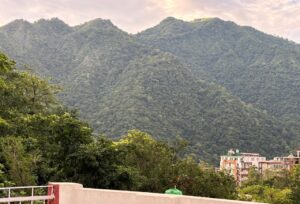
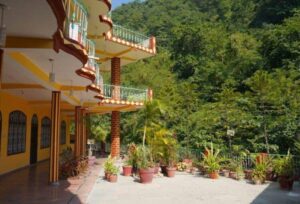



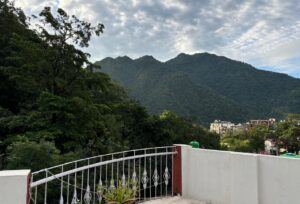

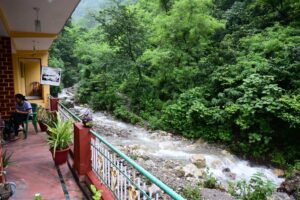
Food
At 300 hour yoga ttc in Rishikesh offers a delicious and nutritious daily Satvik menu prepared on site for students. All meals are vegetarian and we also cater to vegan diets. Our chefs are passionate about cooking and serving Satvik food.
Satvik food is a concept in Ayurveda and yogic philosophy that emphasizes a pure, clean, and balanced diet. It is believed to promote mental clarity, spiritual awareness, and overall well-being. When undergoing yoga training, incorporating Satvik food into your diet can support your practice and enhance the mind-body connection




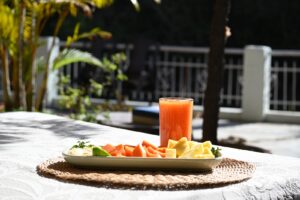

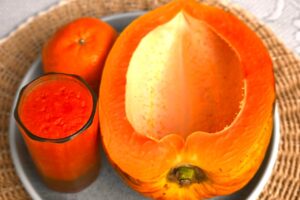

Fresh and Seasonal Fruits
Include a variety of fresh, seasonal fruits in your diet. Opt for fruits such as apples, Mangoes, Pineapple, Papaya, bananas, and citrus fruits. Avoid overly processed or canned fruits.
Herbs and Spices
Use Ayurvedic herbs and spices like turmeric, cumin, coriander, ginger, and fennel. These not only add flavor but also offer various health benefits.
Vegetables
Consume a colorful array of vegetables, both raw and cooked. Include leafy greens, cruciferous vegetables, root vegetables, and others. Steam or lightly cook vegetables to retain their natural vitality.
Legumes and Pulses
Incorporate legumes and pulses like lentils, Soya, chickpeas, and mung beans into your meals. They are excellent sources of plant-based protein.
Nuts and Seeds
Include a variety of nuts and seeds such as almonds, walnuts, chia seeds, and flaxseeds. These provide essential fatty acids and nutrients.
Whole Grains
Choose whole grains like rice, corn, wheat, millet, and oats. These grains provide sustained energy and are rich in fiber and nutrients. [300 hour yoga teacher training in Rishikesh]
Activity During The Course
Outdoor Activities & Excursions in 300 Hour yoga Teacher Training in Rishikesh

As part of our 300 hour yoga teacher training in Rishikesh, we offer a memorable excursion to enhance your journey. We choose between witnessing the stunning sunrise at Kunja Puri Temple, a spiritually uplifting experience surrounded by panoramic Himalayan views, where the golden rays of the sun illuminate the sacred peaks, creating an unforgettable meditative experience, or embarking on an adventurous trek to a serene waterfall, where you can immerse yourself in nature’s tranquility. Both options provide a perfect opportunity to connect with Rishikesh’s natural beauty and spiritual energy, complementing your yoga practice and deepening your overall experience. 300 hour yoga ttc in Rishikesh is an enriching program that helps you evolve into a confident yoga teacher with a strong foundation in both practice and philosophy.

Kunjapuri
Witness the breathtaking views of the greater Himalayas

Waterfall
Enjoy a peaceful hike in the woods up to the waterfall.
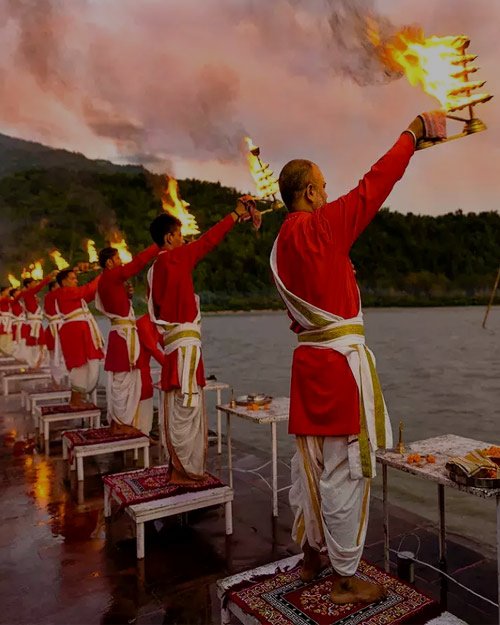
Ganga Arti
Let the energy of the holy Ganga bring you inner peace
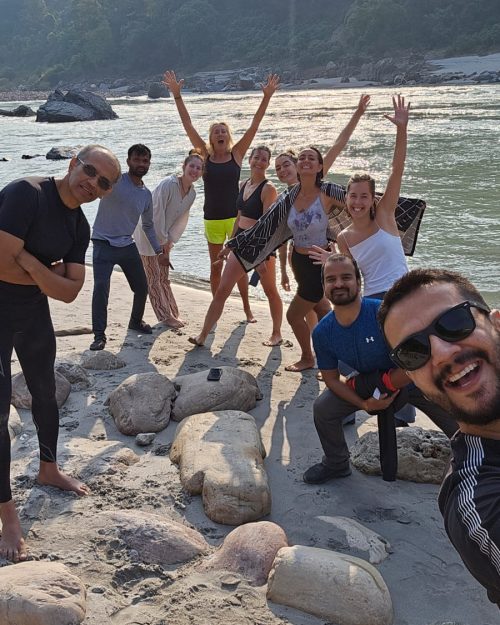
At the Ganges
Connect with the divine energy of the holy Ganges
Testimonial
Video Testimonial of Our Students

Testimonial
Testimonials from past 300 Hour Yoga Teacher Training in Rishikesh participants

I have completed my training in Jiva in April 2024. I’m very happy that I chose this school - all the teachers are very competent, experienced, knowledgeable and kind. I can recommend Jiva 100%!!! Sending lots of love to all the teachers and hoping to come back❤️
I wished to reach back into my East-Indian roots after 40+ years of living in various countries, overseas. I also practice yoga. In a time when the Indian modern outlook wishes to resemble the West, Jiva holds tradition firm in upholding Patanjali’s yoga sutras. The 300 hrs yoga teacher training in Rishikesh offers a comprehensive journey for those looking to deepen their practice and teaching skills.
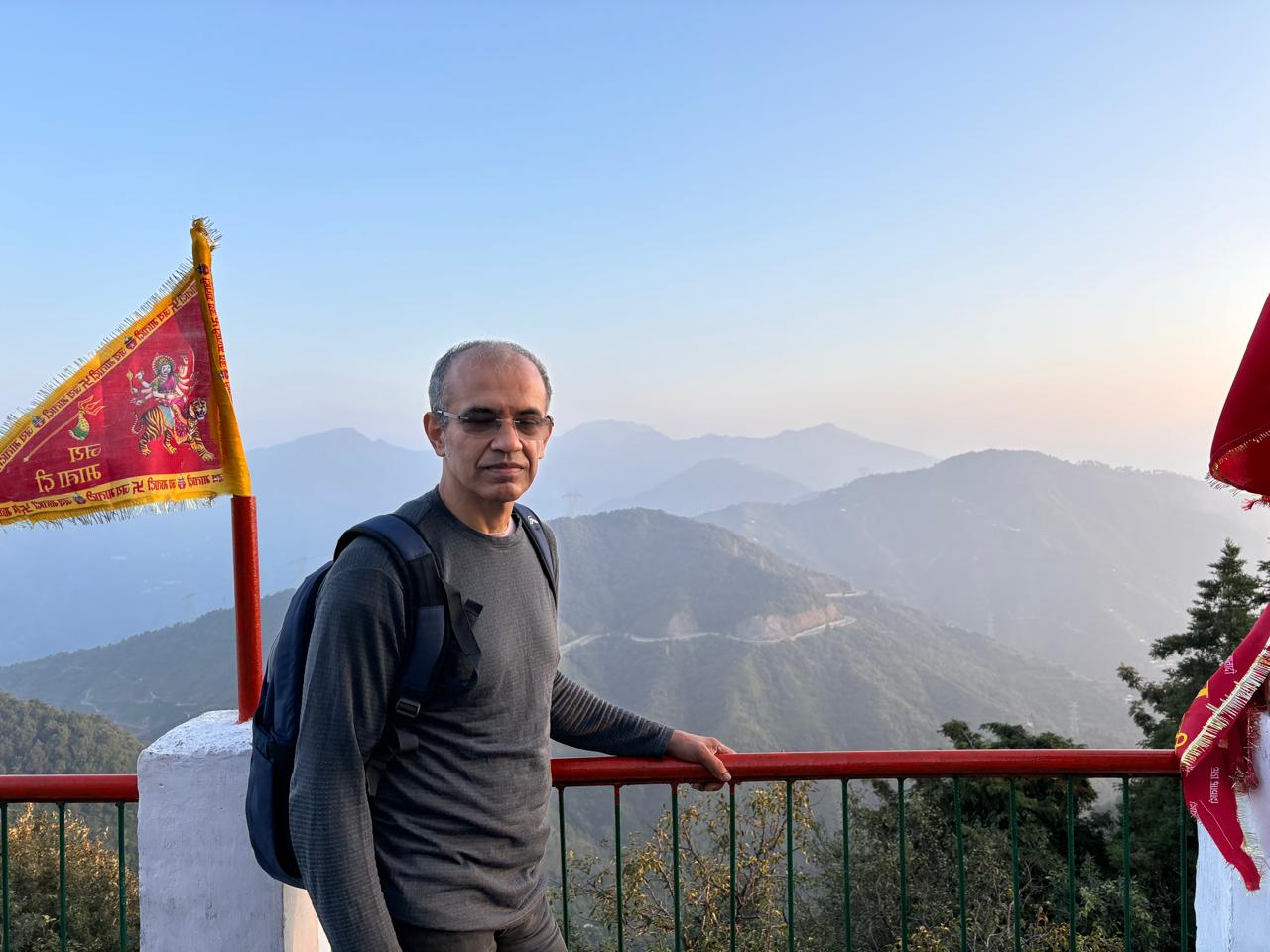
Meet Our Team
Our Teachers

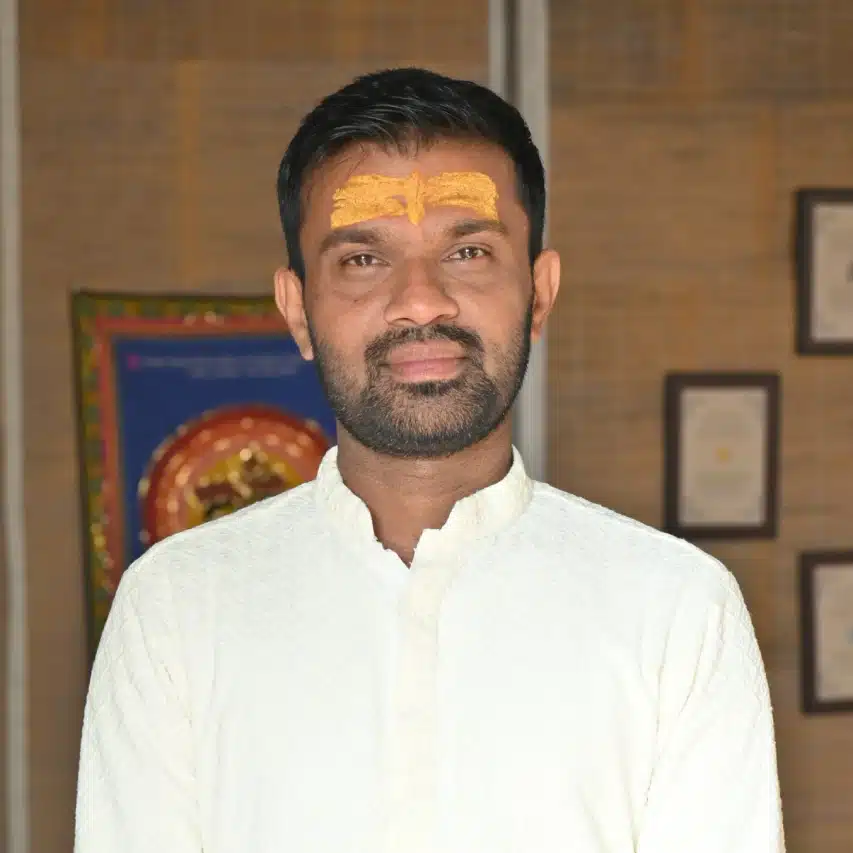
Vikas Pradhan
Ashtanga & Philosophy
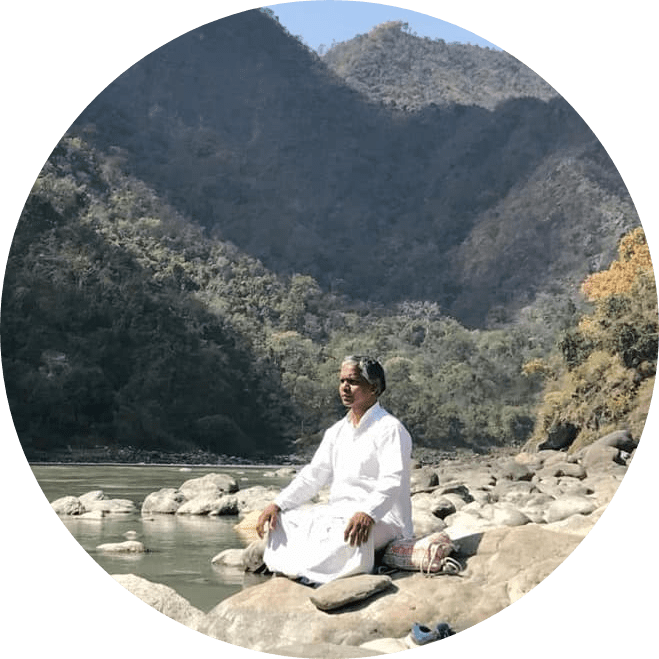
Swami Ramchrit Das
Meditation
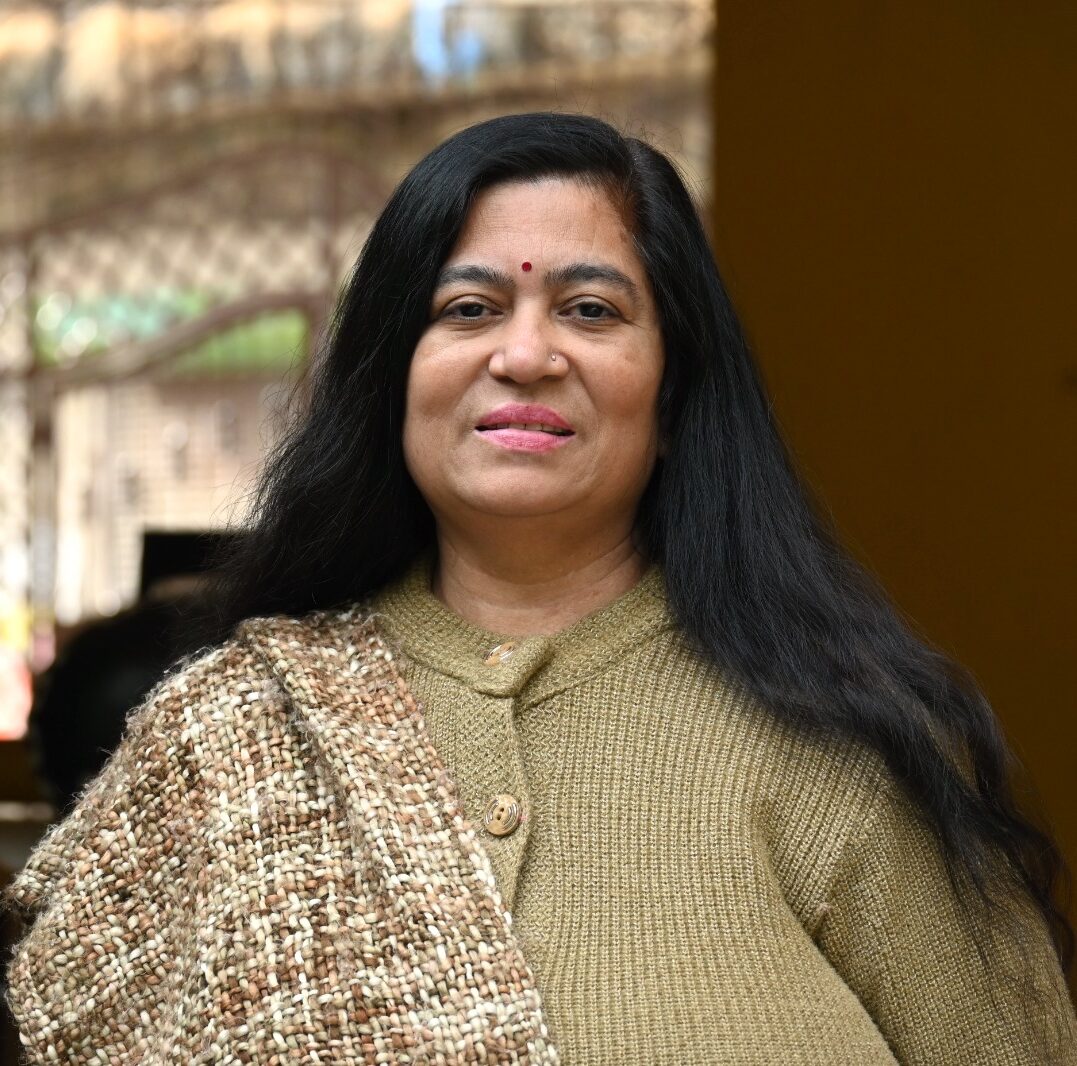
Arti Ji
Holistic Healing
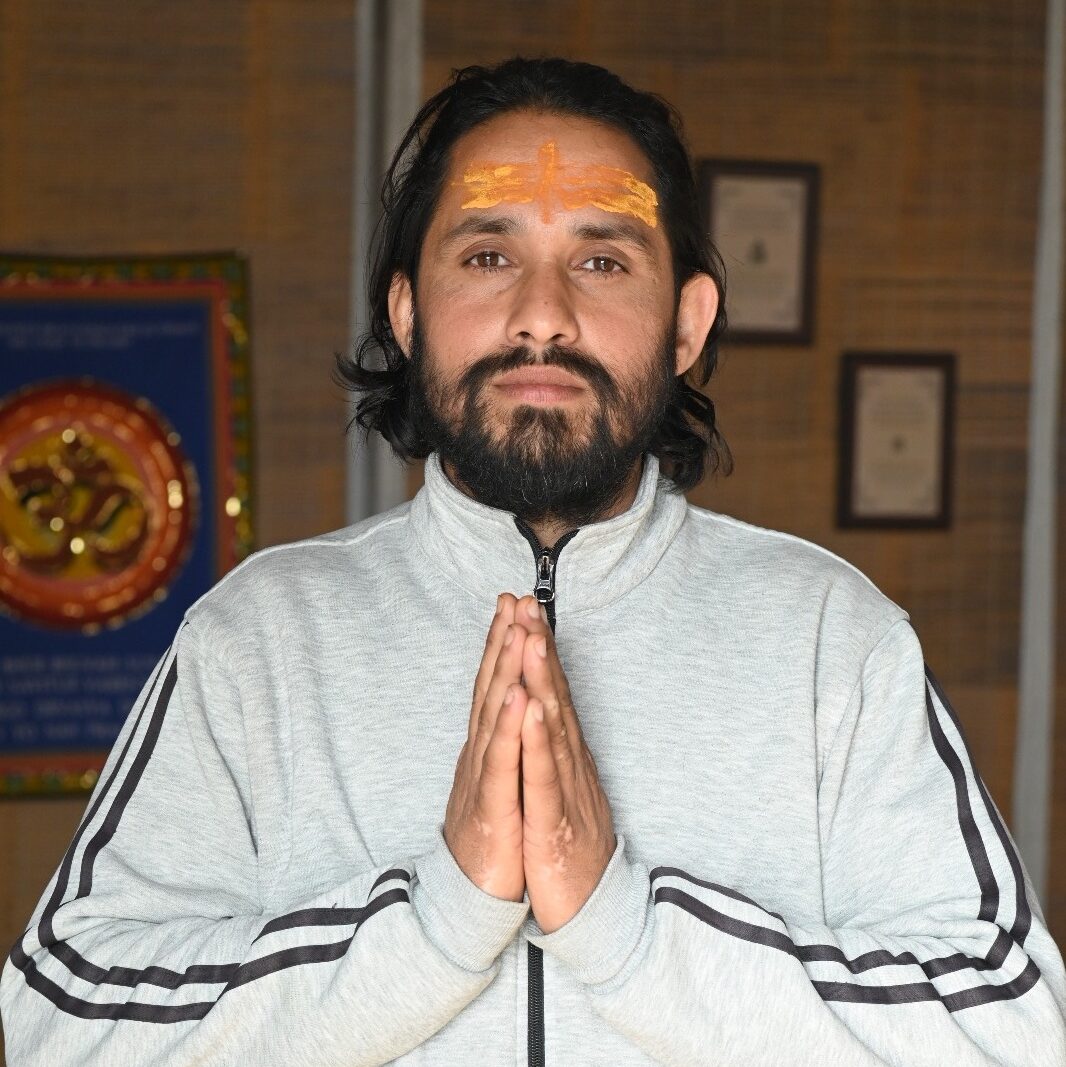
Bhupendra Nautiyal
Pranayama
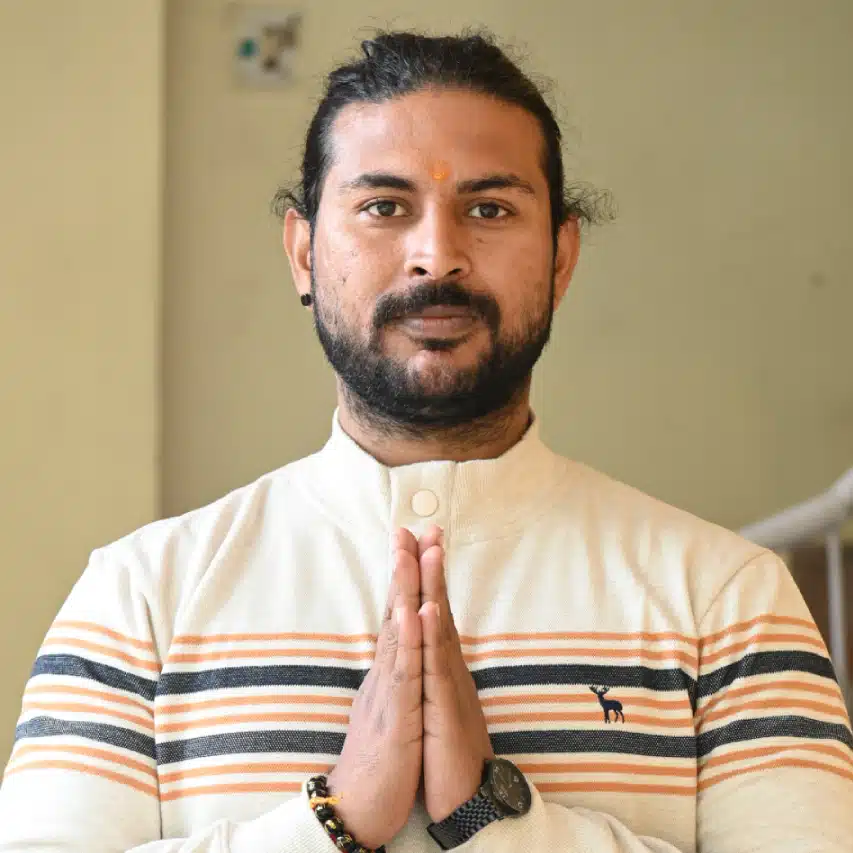
Pankaj Badoni
Hatha Yoga & Alignment

Gokul Bisht
Anatomy
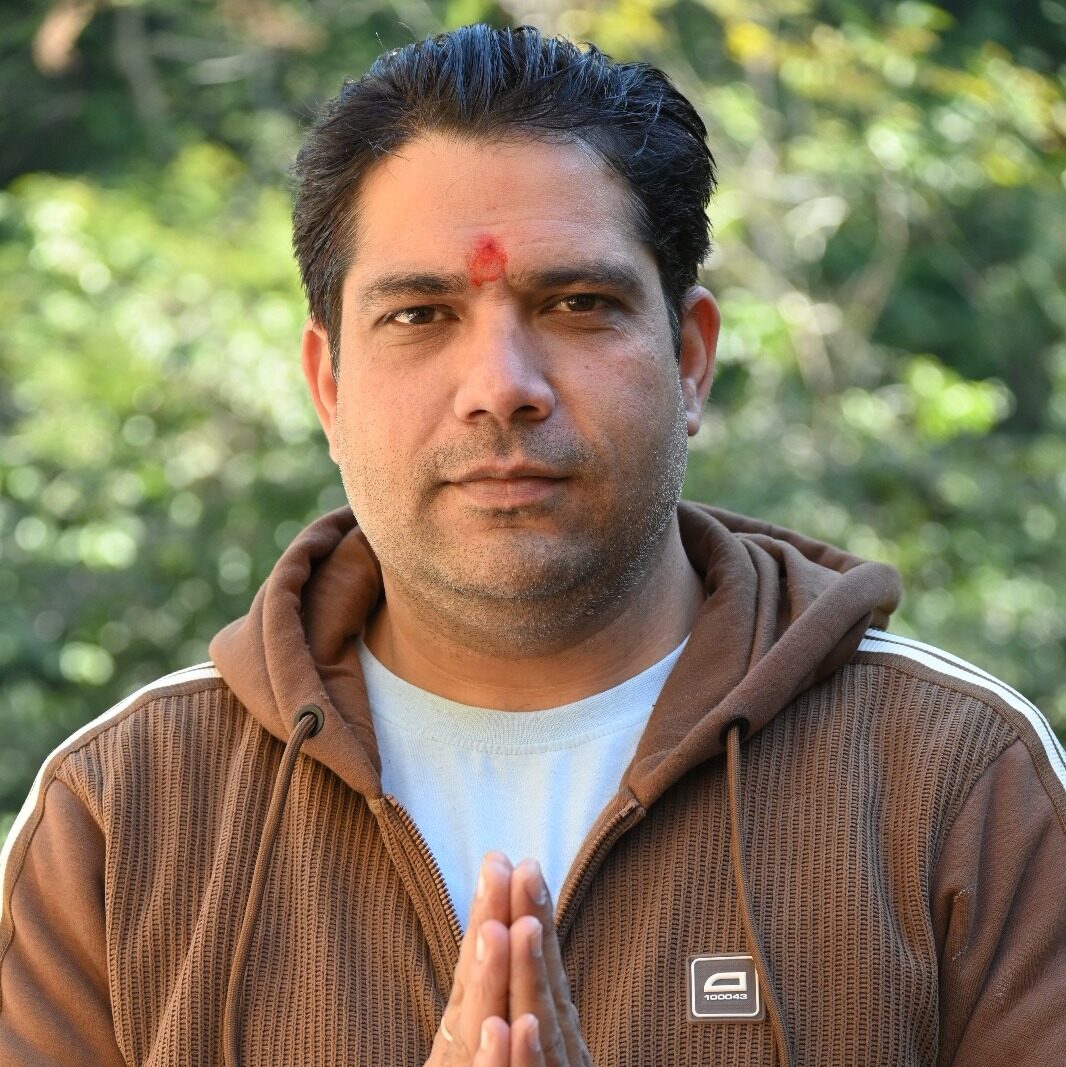
Nitin Varma
Ayurveda
FAQs - 300 Hour Yoga TTC in Rishikesh

We will be providing you yoga mat during the course.
Yes, You need to pay $25 per night including meal.
No! but you can join next available course.
Yes, very much so. The first step in the direction of becoming a Yoga Teacher is to complete 200 hours of Yoga Teacher Training with a Registered Yoga School (RYS). For this, you don’t need any prior yoga experience.
All our courses are designed in a manner apt for all – beginner, intermediate and advanced practitioners. However, we are happy to recommend the below books as pre-reads for the course: • Asana, Pranayama, Mudra and Bandha (200 hours) • Four Chapters of Freedom (300 hrs).


